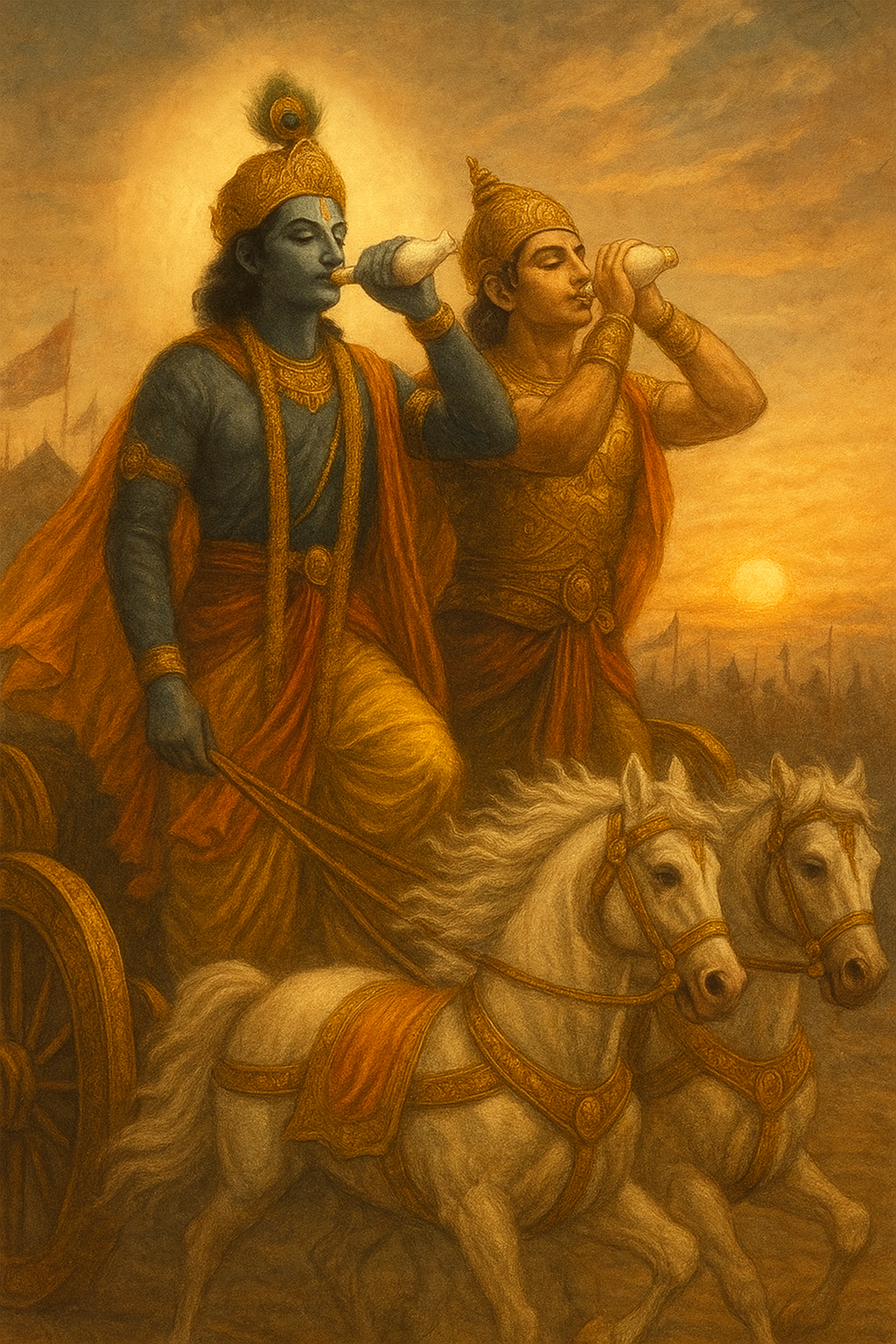
Bhagavad Gita is the first scribed source of Karmyoga - first Smriti. The literal translation of word Smriti is "memory", though the word has a specific meaning when used in context of Vaidik Science.
In the beginning there was Om - the sacred syllable - smooth vibrations of the underlying divine field. Spoken language originated from this source. Humans developed conversational skills, but everyone had to individually remember the contextual history.
Then we discovered scribing! Given the difficulties of early days, scribes chose the content with utmost care. Intent to scribe must yield full consensus. Only precious information made it to the written form - for careful preservation. The word "scripture" points to such pristine information, worthy of writing down.
Given that most of us know how to write and read, indicates that evolution (of intellectual faculties) is heavily biased in favour of the text-enabled. Written text became the collective memory. In Sanskrit, such a collective memory is deemed
Smriti. By virtue of being the collective memory, it is embedded into all of us, even if we are unaware. This deep-seated memory is driver of our intelligence. Think of it as the DNA of thought.
Long before we learnt the skills of scribing and reading, critical information was passed on through rigorous recital - not mere "word of mouth". Such information was called Shruti - communicated through repetitive oration. The Sanskrit word later morphed into Shutri in Hindi.
Now that it is easier to scribe, and to record audio, we have zettabytes of information, so much so that it is impossible to scrape through - at least for humans. However, the quality of content is questionable. Technology has enabled every individual to exercise their wish without seeking consensus - good or bad ? - we don't know !
Revisiting the first Smriti is thus finding signal with in endless noise. There are two paths to access this scripture - look inside - contemplation; or read the text - search. Both are valid, and probably complimentary.
Arjuna, the protagonist, is blessed with divine vicinity of Krishna as his friend and charioteer. Krishna - the knower of all - represents the knowledge embedded into all of us - an embodiment of our Smrities.
Arjuna, portrayed as the best archer world had ever seen, represents the focus and practice - and hence the skills attained in this birth (current iteration) - exquisite but worldly intelligence. Krishna represents evolutionary wisdom - knowledge beyond intelligence - soul. That is one reason Bhagavad Gita is called a conversation between the mind and the soul - particularly at a point when faculties of intellect give in.
Gita is structured as Arjuna's questions followed by Krishna's answers. Just as in AI realm, the formulation of intelligent prompts is the key to knowing, Arjuna's questions represent most intriguing human dilemmas. In doing that, he enabled rest of us with an opportunity to tap into our own Smrities.
Arjun uvaach - the name of this publication - means Arjuna spoke - his heartfelt queries.
Arjuna was a life-long friend, and devotee of Krishna. His voice stands for the questions we mortals have when tested and confused. And also the magical discernment once Krishna unveiled knowledge unto him. Their conversation, amidst the battlefield of Kurukshetra, is among the most potent narratives ever penned down - Bhagvad Gita - gods' song!
At the end of this conversation, Arjuna said :
Nashto Moha , Smritir Labdha ![I am] devoid off of illusions, [I] attained the universal wisdom - the collective memory!
It is not uncommon to experience a momentary relief from cyclic illusions (Moha). Such instances - typically a deep loss - often lead to depression. They leave the disillusioned in a vacuum because absence of Moha is a great void. It must be filled up with knowledge quickly, else it turns into a state of limbo where mind stops seeking truth. Gita on the other hand, spotlights truth through wisdom embedded in our consciousness (Smriti). Gita gives us tools to access the very basis of our intelligence - our soul (Atma). It does so through selfless (but active) participation - KarmYoga. Instead of a run to exit (Sanyasa), Gita welcomes the precious gift we all are endowed with - human experience. It, thus, provisions lasting peace and worldly success - a win-win.
Gita is for everyone - it is not religion, race, profession, gender or place specific. It is not even a complex ideology. Krishna's message is simple - do your duty and leave the rest to me. It is this simplicity of message that has made it one of the most cherished epic of human race. Krishna's arguments are there to help us overcome preexisting complexities of our thought - not the other way around. In that, it takes our mind to a place of freedom, rather than the jail of a rabbit hole!